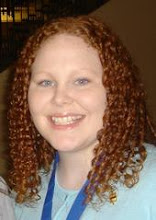The quality tool I selected this week was Nutrition Care Alerts: Warning Signs & Action Steps for Caregivers in Nursing Facilities. Its focus was on the proper nutrition of nursing facility residents, and it provides warning signs and the proper steps the caregivers should take, if needed. This tool was designed to be used every day for every patient suffering from unintended weight loss, dehydration, pressure ulcers, & complications from tube feedings.
This tool is very user-friendly and could easily be applied in different settings besides nursing facilities. It breaks each condition down by warning signs and action steps for the nursing assistant and other members of the care team. The main action step for each condition for the nursing assistant was to report their observations & warning signs to nurses & the dietitian. This is important because if the nurse, who sees the patient daily, does not report the warning signs then the problems cannot be avoided.
Under the section for pressure ulcers, it recommends using the action steps for dehydration, as well as unintended weight loss. To me this is a positive aspect of the tool because if you train the staff on the warning signs & action steps they can be used interchangeably with each condition. It also recommends sharing this guide with coworkers, friends, volunteers, and the resident’s family members. This would allow for everyone to know the signs and what to do if needed to maintain and/or improve the patient’s health.
http://www.ahca.org/quality/care-alert/care-alerts.pdf

2 comments:
I reviewed Allison’s blog on Nutrition Care Alerts: Warning Signs & Action Steps for Caregivers in Nursing Facilities. I agree that the nurse should report all observations of the patient’s care. It should be documented for medical rules and policies but also for patient knowledge and family awareness. A lot of nursing home patient’s relatives like to know what’s going on with the love one that they have in the home and having documentation of step-by-step observation will keep down a lot of confusion between the relative and the nursing staff. I also agree that more people should be aware of how to treat a patient. For example, if a patient’s primary nurse isn’t there to help aid the patient then another nurse or family member should be able to assistance that patient because a lot of problems will occur if the patient is without something vital due to staffing absences.
Good job at pointing out basis for the tool but be more specific on specific requirements or recommendations that were of interest.
Post a Comment